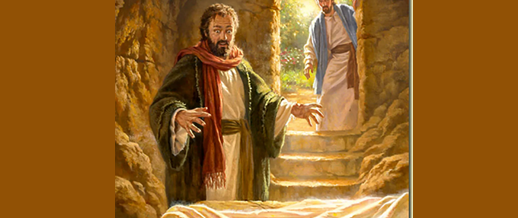
We have something in our Roman Catholic faith called the “hierarchy of truths.” In other words, while we believe many things to be true, some just carry more importance than others. In a hierarchy, the most important stuff is found at the top, and the less important stuff is found further down the ladder. I actually prefer a dartboard to a hierarchy. The bullseye of the dartboard is the absolute truth of all truths—that Jesus Christ is risen. If he is not risen, then our faith is in vain, says St. Paul (1 Cor. 15:14).
The death and resurrection of Christ are not simply events that happened to Jesus 2000 years ago. The death and resurrection of Jesus is the pattern of all life. Nothing emerges without first dying. Every one of you reading these words has already partaken—whether you are aware of it or not—in many little “deaths” and many little “resurrections.” They are test runs, rehearsals for your final death and ultimate resurrection.
If Jesus simply lived and died, he would be, at best, remembered as another great prophet of Israel. Our conviction, like those of the Early Church, is that the Risen Lord is forever among us. Jesus’ own resurrection gave notice that death would no longer have power over us. Our death, like Jesus’ death, is no more than a “change of life.” You have all heard the priest pray these words at a funeral Mass: “life is changed, not ended.”
There are three accounts in the gospels where Jesus raised people from the dead. He raised the daughter of Jairus (Mk. 5:21-43), the son of the widow of Nain (Lk. 7:11-17), and, of course, Lazarus (Jn. 11:1-44) who had been in the tomb four days. These events, as powerful as they were, are qualitatively different than the Resurrection of Christ. Unlike Christ’s Resurrection, these three were more akin to what we call resuscitation, although that doesn’t fully capture it either. These three would live a while and then have to die again. Jesus, on the other hand, had his body-person transformed forever. What a transformed body looks like is beyond my imagination. Everyone who saw Jesus in his resurrected state were so caught by surprise that even they were hard pressed to described him. Unlike a mortal body, he could pass through walls (Jn. 20:19), walk alongside the disciples on the road to Emmaus (Lk. 24:13-35) and offer his mortal wounds to be touched
(Jn. 20:19-29). Many gave their lives in witness to this truth. We even confess in the Apostles Creed that we fully expect “the resurrection of the body” for ourselves at the end of time.
It wasn’t just the fact of the Resurrection but, moreover, the experience of the Risen Lord that launched the Christian faith and founded the Church. Of course, the experience of the Risen Lord at Easter must be rounded out with the experience of the Holy Spirit at Pentecost. The Spirit is not bound by time and space like flesh is. I’m sure you have all experienced the spirit of a loved one no longer with you in the flesh. I have. That’s the tipoff that resurrection is real, and that death is a doorway from life to greater Life.
The Jesus of history and the Christ of faith are one and the same person. Don’t try to understand what will always remain mystery. Instead, hunger for an experience of the Risen One in your midst. He’s not in the tomb. In his resurrected state, Jesus is about the land doing what he always did.
Fr. Phil Mulligan
APR
2022

About the Author: